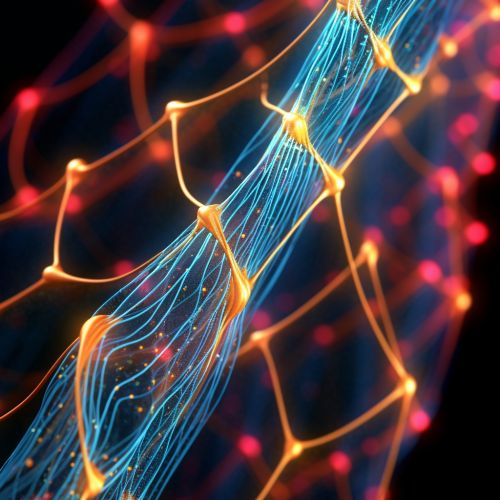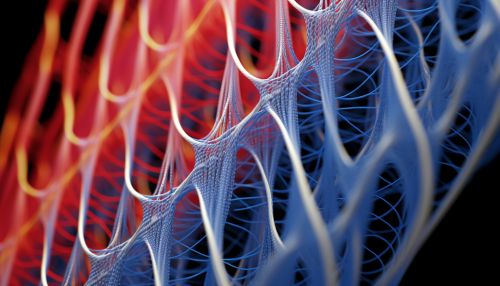Sarcomere
Structure and Function
A sarcomere is the basic functional unit of striated muscle tissue. It is the part of the muscle that actually contracts. Sarcomeres are composed of long, fibrous proteins that slide past each other when the muscles contract and relax. Two of the important proteins are myosin, which forms the thick filament, and actin, which forms the thin filament.


The structure of a sarcomere is fairly complex. The thick filaments of myosin are located in the center of the sarcomere, surrounded by the thin filaments of actin. The area where the thick and thin filaments overlap is called the A band. The area that contains only thin filaments is called the I band. The center of the A band, which contains only thick filaments, is called the H zone. The M line is a structure that runs down the center of the A band and appears to anchor the thick filaments. The Z line, or Z disc, defines the boundaries of each sarcomere.
Contraction Mechanism
The contraction of a sarcomere is triggered by the nervous system. Neurons release a chemical neurotransmitter at the neuromuscular junction, the point where nerve endings meet the muscle cells. This causes an electrical change in the muscle cell's membrane, the sarcolemma, and triggers the release of calcium ions (Ca2+) from the sarcoplasmic reticulum, a specialized endoplasmic reticulum in muscle cells.
The increase in calcium ion concentration initiates the interaction of myosin and actin. The myosin heads bind to the actin filaments, forming cross-bridges. Powered by the hydrolysis of ATP, the myosin heads then pull on the actin filaments, causing them to slide toward the center of the sarcomere. This sliding of actin filaments over myosin filaments is known as the sliding filament model of muscle contraction. The entire process is also known as the cross-bridge cycle.
Regulation of Contraction
The interaction of myosin and actin is regulated by the proteins tropomyosin and troponin. Tropomyosin is a protein that winds around the chains of the actin filament and covers the myosin-binding sites to prevent actin–myosin interaction when the muscle is not contracting. Troponin is a complex of three proteins attached to tropomyosin. When calcium ions bind to the troponin complex, it changes shape and moves tropomyosin away from the myosin-binding sites on actin, allowing for muscle contraction to occur.
Role in Muscle Diseases
Abnormalities or damage to the sarcomere can lead to various muscle diseases. For example, mutations in sarcomeric proteins can lead to hypertrophic cardiomyopathy, a disease in which the heart muscle becomes abnormally thick. Other diseases, such as muscular dystrophy, involve a progressive weakening and wasting of the muscles. In these diseases, the sarcomeres are not able to function properly, leading to the symptoms of the disease.
